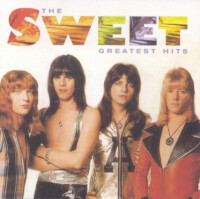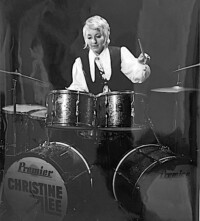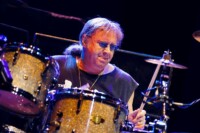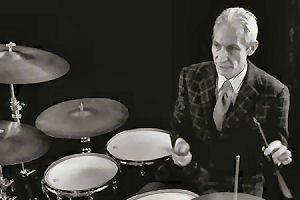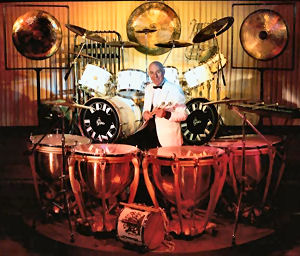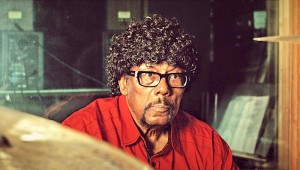 James Edward Gadson was born in Kansas City, Missouri on June 17th, 1939. His father Harold was a jazz drummer, originally from Texarcana, who played in local Big Bands with the likes of Jay McShann and Charlie Parker, when Joe Turner would be singing too. Because of the way his own career had turned out, Harold evidently didn’t want James to have anything at all to do with the music business. In the event he must have been disappointed because both of his sons ultimately took to the ’dark side’ and became musicians.
James Edward Gadson was born in Kansas City, Missouri on June 17th, 1939. His father Harold was a jazz drummer, originally from Texarcana, who played in local Big Bands with the likes of Jay McShann and Charlie Parker, when Joe Turner would be singing too. Because of the way his own career had turned out, Harold evidently didn’t want James to have anything at all to do with the music business. In the event he must have been disappointed because both of his sons ultimately took to the ’dark side’ and became musicians.
The thing about James was that he didn’t actually want to be a drummer and seemingly, having had his own trials and tribulations, his old man was pleased with that. Actually what his son really wanted to be was a singer and a song-writer and hear himself on the radio! So much so that at 10 years old he’d jump out of the window and sit in as a singer with bands in the clubs. He started out learning to play the trumpet at high school and evidently dabbled a little with marching drums – inasmuch as he learned how to hold the sticks, and some of the essential snare drum rudiments, without having any idea how to play an actual drum kit!
According to some sources young James seems to have been something of a self-confessed juvenile delinquent and wisely decided to join the USAF at a somewhat young age to get away from all the temptations. He didn’t join the Airforce as a trumpeter because they discovered he had an imperfect embouchure which wouldn’t allow him to get above ‘C’ – so he was unable to pass the exams. Somehow though he seems to have managed to enlist as a singer which not only kept him out of danger, it took him around the world.
Eventually he left the service in 1961 and having returned home to Kansas City discovered to his surprise that his brother Tom (akaTatty) had become a guitarist with his own ‘doo wop’ vocal group. James was into this close-harmony style of singing and decided to join his brother’s group, who were called ‘The Carpets’, on keyboards – playing like Little Richard. The Carpets started paying their dues by playing around the Southern States on what was known as the ‘Chitlin’ Circuit’ which meant driving hundreds of miles from gig to gig in a station-wagon with little sleep, little food and even less money. When the bands original drummer switched to bass they needed someone to fill in and James volunteered himself for the position thinking, since he’d been shown paradiddles and other rudiments in the drum corps, that it couldn’t be that difficult to play all the elements when comprised a drum kit. Not that James actually had all those elements – all he had was a bass drum, one tom, snare drum and a cymbal. Obviously he was missing the ubiquitous piece which would ultimately become highly important to his playing – the hi hat. However he worked hard at learning the drums, and the set he was landed with turned out to be an adequate one for his needs at the time, on the grounds that he’d never played one before! Sometime later he did buy the ‘George Stone Drum Book’ and applied himself to learning what it contained, so he did feel it was important enough to put some effort in.
Eventually the whole band tired of the way of life where they were frequently billed by the promotor as ‘Otis Redding’, or ‘William Bell’. Once the audience discovered the deception they were justifiably and, I’m guessing sometimes dangerously, unhappy about being cheated.
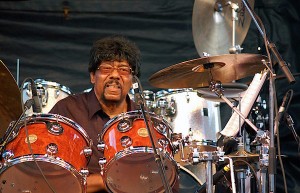 The Carpets ended up in Florida where upon the rest of the band gave up the unequal struggle and headed-off home, but James was obviously built of sterner stuff and stayed on to play at one of the clubs which became known as the home of the twist. One version of ‘The Peppermint Lounge’ was in New York but the other was in Miami Beach, where he played with Hank Ballard and The Midnighters. Those of you who are seriously hip will know that these guys were the first to put out a Twist record with a song Hank wrote called ‘The Twist’, which was ultimately covered much more successfully by Chubby Checker.
The Carpets ended up in Florida where upon the rest of the band gave up the unequal struggle and headed-off home, but James was obviously built of sterner stuff and stayed on to play at one of the clubs which became known as the home of the twist. One version of ‘The Peppermint Lounge’ was in New York but the other was in Miami Beach, where he played with Hank Ballard and The Midnighters. Those of you who are seriously hip will know that these guys were the first to put out a Twist record with a song Hank wrote called ‘The Twist’, which was ultimately covered much more successfully by Chubby Checker.
Hank Ballard had started in the Fifties with a trilogy of decidedly risqué ‘Annie’ songs: “Work With Me Annie”, “Annie Had A Baby” and “Annie’s Aunt Fanny” which, if you knew what rock ‘n’ roll really meant, left little to the imagination. As an aside, there was a great deal of intentional double-entendre in the lyrics of many ostensibly innocent songs at the beginning of the exciting new music the world was embracing so enthusiastically. James said he and the band practised John Coltrane music during the day and played Rhythm & Blues for enthusiastic audiences during the night.
Eventually James returned to Kansas City and replaced his original drum set (which he says he sold to Kansas City drummer Jimmy Lovelace for $7) while putting all his energy into learning more about the instrument. He was playing with local organ trios and picking-up tricks on exactly how to play with them from artists like Jimmy Smith (with George Benson on guitar at the time), Red Holloway and Jack Mc Duff, when they came through town. However, to keep himself going when he wasn’t able to concentrate on playing just this really cool genre of music, he had to play all kinds including polkas.
Some vocalist friends from Kansas City had made the move to California and had ostensibly cracked it since they’d made an appearance on Dean Martin’s TV show. They encouraged James to come on down and start playing with them, and this he did in 1966, and it resulted in him struggling enthusiastically doing ‘scam’ (ie non-union) work for quite some time before he eventually began to gig as a proper musician. However it wasn’t that easy when he arrived because he was so into jazz that he wasn’t able to play his new band’s music and they had to let him go.
Los Angeles is a sprawling metropolis which isn’t laid out like London, or New York. It’s not the sort of place where you can easily get a bus or a train anywhere – other than perhaps coast to coast! You need a car and without one (or money) you have only one alternative – you have to walk or put yourself in a position to possibly fall foul of the law by hitch-hiking. James found himself walking 80 blocks or so and dodging traffic to sit in and earn $17 playing drums from 6am to 2pm. And since we’re not talking city blocks here, he must have worked-up quite a sweat by the time he got there. He supplemented this with a variety of jobs (like working for the US Mail) although he says he never got up to anything illegal.
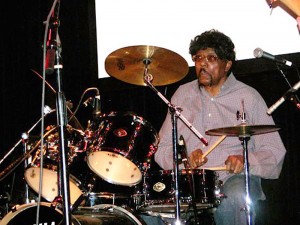 Although he came from Kansas City, which was famous for big band jazz and the double-handed shuffle, he didn’t come to the drum world’s notice until he had made that move to Los Angeles. Even then it looked like he was going to become better known as a record producer until he bumped into Paul Humphrey. He showed him exactly how to play drums in the studio. Paul went on to play in the Lawrence Welk Orchestra on Prime Time TV for several years. As I mentioned, James had had a big problem, as a drummer steeped in jazz he couldn’t naturally find ‘the pocket’ so he started creating his own. In the strip club he was advised to play like Motown: ‘fours’ on everything; hi hat, bass drum and even snare drum Eventually he learned how to find that elusive pocket and his career took off.
Although he came from Kansas City, which was famous for big band jazz and the double-handed shuffle, he didn’t come to the drum world’s notice until he had made that move to Los Angeles. Even then it looked like he was going to become better known as a record producer until he bumped into Paul Humphrey. He showed him exactly how to play drums in the studio. Paul went on to play in the Lawrence Welk Orchestra on Prime Time TV for several years. As I mentioned, James had had a big problem, as a drummer steeped in jazz he couldn’t naturally find ‘the pocket’ so he started creating his own. In the strip club he was advised to play like Motown: ‘fours’ on everything; hi hat, bass drum and even snare drum Eventually he learned how to find that elusive pocket and his career took off.
Like many successful recording drummers in America’s premier music cities like Nashville, James was frightened to leave to go on tour for fear that he wouldn’t get his sessions back. In the event this didn’t happen because he began to tour with the likes of Eddie Harris and the studio gigs were still there when he got back.
He met a guy from New Orleans called John Boudreaux who introduced him to Charles Wright and his band ‘The Wright Sounds’ which ultimately led him in the funky direction of ‘The Watts 103rd Street Rhythm Band’. Bill Cosby liked them and brokered a record deal with Warner Brothers Records. Their first hit record was “Do Your Thing” with the ‘B-side’ written by James Gadson himself, called “A Dance, A Kiss And A Song”. At the same time he was moon-lighting with another group called ‘Dyke and the Blazers’ which had hits with: “Funky Broadway”, “We Got More Soul” and “Let A Woman Be A Woman, And A Man Be A Man”.
Bill Withers had had a hit with “Ain’t No Sunshine” and James was booked to play on “Kissing My Love”. The two of them hit it off together and when Booker T. Jones decided against producing the next Withers’ album James stepped in.
Once his career took off, instead of slavishly sticking to the part he had been issued with, he was trusted to come up with something better. “Kissing My Love” was supposed to be a shuffle but it didn’t work until James straightened ‘some of the dotted quarter notes’ out of the part and all of a sudden it came alive. James and Bill Withers were friends, having been introduced by someone in the Watts band, and James was better-equipped than most drummers to produce records because he could play the keyboards, write the songs and, if necessary, sing them. He feels that reading music and knowing about it from a keyboard perspective is essential for any drummer interested in making it in music.
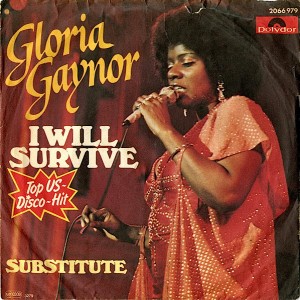 To illustrate this point in the seventies Motown Records set-up a recording studio in Los Angeles called Mowest and a record contractor bumped into James Gadson saying he’d been searching for him for a couple of years to play on sessions for Berry Gordy’s label. He asked James if he could read and he said of course he could. He was being liberal with the truth! For his first Motown session he was in at the deep-end working with The Jackson Five on a track called “Dancing Machine”. Even though he’d been taught music when he’d learned the trumpet in high school, these parts were real with different toms on their own line and hi hat ‘barks’ marked and James quickly realised his limitations. He certainly couldn’t sight-read music well enough to hold his own in sessions so he went out of his way to learn what he now considers to be possibly the most important parts of the session drummer’s armoury and worked on dozens and dozens of Motown sessions. One song called “I Want You” came about because the guys in the studio were simply jamming together before the session started and the producer liked it so much he kept the tape running
To illustrate this point in the seventies Motown Records set-up a recording studio in Los Angeles called Mowest and a record contractor bumped into James Gadson saying he’d been searching for him for a couple of years to play on sessions for Berry Gordy’s label. He asked James if he could read and he said of course he could. He was being liberal with the truth! For his first Motown session he was in at the deep-end working with The Jackson Five on a track called “Dancing Machine”. Even though he’d been taught music when he’d learned the trumpet in high school, these parts were real with different toms on their own line and hi hat ‘barks’ marked and James quickly realised his limitations. He certainly couldn’t sight-read music well enough to hold his own in sessions so he went out of his way to learn what he now considers to be possibly the most important parts of the session drummer’s armoury and worked on dozens and dozens of Motown sessions. One song called “I Want You” came about because the guys in the studio were simply jamming together before the session started and the producer liked it so much he kept the tape running
So what was different about James Edward Gadson? He was seriously funky and there was a reason for it. His jazz interest meant he found it very difficult to straighten out his sixteenth notes. This was something I’ve written about before and this factor alone contributed to the feel of rock and roll as far as drumming was concerned. As far as fifties rock ‘n’ roll was concerned it didn’t matter if the drummer played ’10 to 2’ and the piano player shuffled. As a matter of fact the music was all the better for the rhythmical frisson it created.
Being ostensibly a jazz drummer naturally he wanted his drums to sing but of course producers seldom wanted that sound. They wanted dead drum sounds which were easy to record and didn’t interfere with the other instruments. So James was playing ‘damp’ drums so much in the studio he became used to it although he really wanted that open sound which was more stimulating from a playing point of view.
Like all drummers he became disconcerted when the Linndrum came out, although he really had an axe to grind because he suspected that they were his sounds that Roger Linn had laboriously sampled in 1979. I’m not convinced because Jim Keltner also claimed this dubious honour.
To hear James at his best, check out anything on YouTube with his pal Bill Withers, and something much more up to date with Doyle Bramhall “Mama Can’t Help You”.
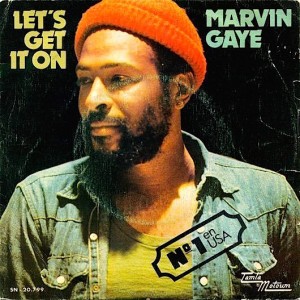 Depending on who you listen to, James Gadson has played on 300 Gold Records although he claims that was some time ago and it’s now in excess of 500. He’s also the most sampled drummer in contemporary history.
Depending on who you listen to, James Gadson has played on 300 Gold Records although he claims that was some time ago and it’s now in excess of 500. He’s also the most sampled drummer in contemporary history.
James bears the distinction of having played with ‘The Three Kings’: Freddy, Albert and BB, although not as far as I can see, all at the same time. The list of people he’s accompanied is exhaustive and exhausting – it took up five pages in my notebook.
So, the abbreviated list of superstars James Gadson has played with is, as it was for Hal Blaine and Earl Palmer, comprehensive. So here’s just a few.
Paul McCartney, Babara Streisand, Beck, Joe Cocker, Donald Fagan, Justin Timberlake, Ray Charles, Diana Ross, Keith Urban, Tavares, Cheryl Lynn, Marvin Gaye, The Jackson 5, The Isley Brothers, James Brown, George Duke, Aretha Franklin, Herbie Hancock, Quincy Jones, Gladys Knight, The Supremes, Tina Turner, Nora Jones, Martha Reeves, Rose Royce, Randy Crawford, Robert Palmer, Diana Ross, Ramsey Lewis, Tom Jones, The Pointer Sisters, Leonard Cohen, Thelma Houston, Pharoah Sanders, Jamie Callum, Simply Red and Questlove who he produced.
If you’re looking for a sample of specific tracks he played on how about “I Will Survive”, “Saturday Night Fever”, “Heaven Must Be Missing An Angel” and “Let’s Get It On”.
I have to admit to being a little perplexed as to which side James Gadson dresses, if you’ll pardon the intended smutty pun! He certainly plays drums right-handed but I saw a film of him miming playing a bass where he was very definitely playing southpaw. Curious!
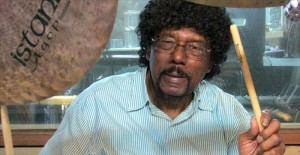 These days he plays Istanbul Agop cymbals and DW drums although the internet has pictures of him with a few other brands.
These days he plays Istanbul Agop cymbals and DW drums although the internet has pictures of him with a few other brands.
James Gadson’s drumming heroes are Max Roach, Elvin Jones, Jim Keltner, Chris Dave and Dave Weckl, and he has this good advice for any drummer: “You have to be a good accompanist. The drummer is a time keeper so you need to make it comfortable for everyone to do their things. Learn the rhythms, learn the grooves so you can play with them – not against them!”
Bob Henrit
April 2018

